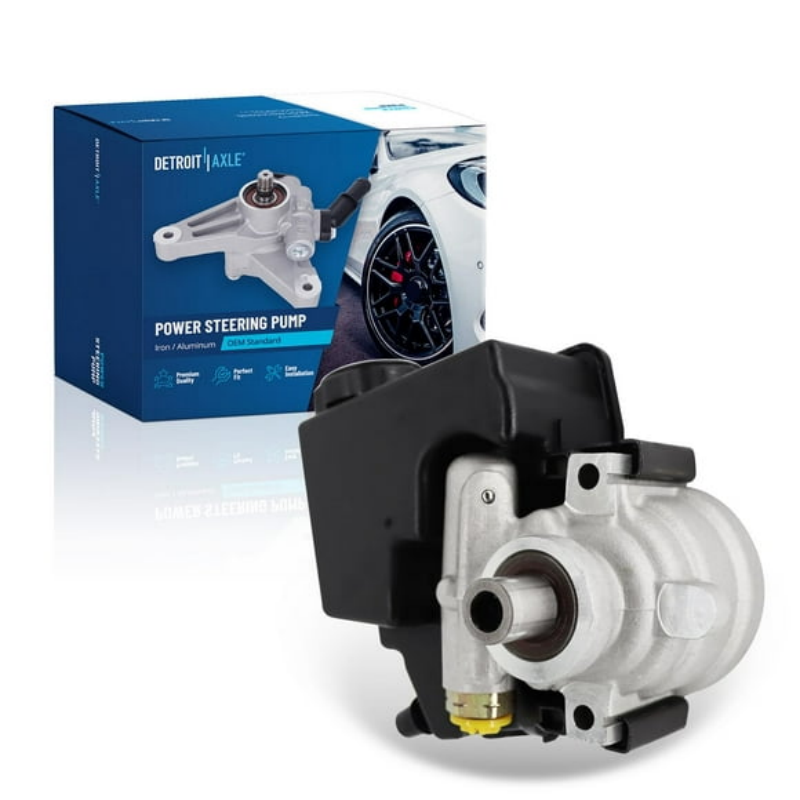Understanding What Does Steering Assist Is Reduced Mean
Driving a vehicle involves a multitude of systems working in harmony to ensure safety and efficiency. One of the critical components of modern vehicles is the steering assist system, which enhances the driver’s capability to maneuver the vehicle. However, drivers may sometimes encounter a warning message on their dashboard that states, “what does steering assist is reduced mean?” This warning can lead to confusion and concern, as it directly relates to the vehicle’s steering performance. Understanding what this message means, its implications for vehicle operation, potential causes, and how to address the issue is essential for maintaining safe driving conditions. This article aims to provide a thorough exploration of the topic, ensuring you are well-informed on the matter and can take appropriate action if this notice appears in your vehicle.

What is Steering Assist?
Before delving into the specifics of what does steering assist is reduced mean, it’s essential to understand what steering assist is and its role in modern vehicles. Steering assist refers to a system designed to reduce the physical effort required by drivers to turn the steering wheel, thereby making the driving experience more comfortable and less strenuous.
Types of Steering Assist Systems
There are two primary types of steering assist systems utilized in vehicles today:
- Hydraulic Power Steering (HPS): This type of system uses hydraulic pressure generated by power steering pumps to assist the driver when steering. It typically operates through a series of hoses, pistons, and valves that enhance the turning capability of the steering wheel, making it easier to maneuver.
- Electric Power Steering (EPS): This more recent innovation employs electric motors to provide steering assistance. The electric power steering system is often integrated with various vehicle sensors that monitor steering input, vehicle speed, and other factors to deliver optimal levels of assist. EPS is generally more energy-efficient and can be easily adjusted to provide variable levels of assistance depending on driving conditions.
Benefits of Steering Assist
Steering assist systems enhance the driving experience in several ways:
- Reduced Physical Effort: Steering assist significantly reduces the effort required to turn the steering wheel, making it easier for drivers to maneuver.
- Improved Control: These systems provide more responsive feedback, enhancing overall control while driving, especially at low speeds or during parking maneuvers.
- Increased Safety: By decreasing physical strain, steering assist can help prevent fatigue, leading to safer driving conditions.
What Does the Warning Mean?
Now that we have established what steering assist is, let’s discuss what does steering assist is reduced mean. When you receive this message, it indicates that the assistance provided by the steering system is operating below normal levels. As a result, the driver will feel increased resistance when turning the steering wheel. The system may still function, but it won’t respond as smoothly, which can complicate handling and maneuverability.
Implications for Driving
Understanding the implications of reduced steering assist is vital. Below are some specific effects that may result from this warning:
- Increased Steering Effort: When steering assist is reduced, drivers must exert more force to turn the wheel. This resistance can make driving more cumbersome, especially in tight spaces or during parking.
- Difficulty in Maneuvering: The increased effort required may complicate sharp turns or emergency maneuvers, which can pose risks in certain driving situations.
- Changes in Vehicle Performance: You may notice changes in how the vehicle feels during operation. Reduced steering assist can disrupt the smoothness of your driving experience, especially at lower speeds.
Common Causes of Reduced Steering Assist
Several issues may trigger the “steering assist is reduced” message. Identifying the root cause is essential for addressing the problem effectively. Here are some common reasons:
Low Power Steering Fluid
For vehicles equipped with hydraulic power steering, low power steering fluid levels can lead to reduced assist. This problem may arise due to leaks in the system or lack of maintenance. When fluid levels drop below acceptable levels, the pump cannot generate adequate pressure, resulting in less assist.
Faulty Power Steering Pump
If the power steering pump malfunction, the system may struggle to provide the necessary assistance. Common signs of a failing pump include whining noises, poor response from the steering wheel, and fluid leaks. If the pump fails completely, you will have minimal steering assistance.
Malfunctioning Electric Power Steering Components
In vehicles with electric power steering systems, a malfunction in any component—such as the electric motor, control module, or torque sensor—can trigger a reduction in assist. Electrical failures or short circuits can also disrupt the system’s functionality, leading to the warning message.
Sensor Issues
Many electronic power steering systems rely on sensors to determine when to provide assistance. If these sensors fail or provide inaccurate readings, this can lead to a reduction in steering assist. Common issues may include debris on sensors or faulty wiring.
Steering Column Problems
The steering column itself can develop issues that lead to reduced assist. Problems such as binding, wear, or damage in the column may prevent smooth operation, complicating steering and causing the assist system to activate more conservatively.
Symptoms to Consider
When faced with the warning “what does steering assist is reduced mean,” it’s crucial to monitor other symptoms accompanying the message. This can help identify potential issues accurately. Here are some key signs to watch out for:
Increased Resistance
The most notable symptom is the physical sensation of increased resistance when turning the steering wheel. You may feel like the wheel has become significantly heavier to turn, which can be concerning.
Warning Lights
You may also notice additional warning lights illuminated on your dashboard. These could indicate a related issue, such as a problem with power steering fluid levels or other system malfunctions.

Unusual Noises
If your power steering system is generating unusual noises—such as whining, grinding, or clunking sounds—this could indicate underlying issues within the system. Pay attention to these noises, especially when turning the wheel.
Fluid Leaks
If you notice spots or puddles of power steering fluid under your vehicle, it indicates a leak that can affect the performance of the steering assist system. This is particularly critical for hydraulic systems.
Steps to Diagnose the Issue
If you experience the steering assist warning, follow these steps for diagnosing the issue:
Visual Inspection
Begin with a visual inspection of the steering components. Check for fluid leaks, visible wear on hoses, and any loose connections. Ensure that the power steering reservoir is filled to the recommended levels.
Listen for Noises
When turning the steering wheel, listen for any abnormal noises. Take note of when these noises occur and describe them accurately, as this information can facilitate troubleshooting during a service visit.
Check Fluid Levels
For vehicles equipped with hydraulic power steering systems, check the fluid levels in the reservoir. Adding fluid to the appropriate level may resolve the issue, assuming there is no significant leak.
Test Other Functions
If your vehicle has an electric power steering system, check if other electrical components exhibit any dysfunction. This can help identify whether the problem is localized to the steering system or broader electrical issues exist.
Consult Diagnostic Codes
If your vehicle is equipped with an onboard diagnostic system, consider using a code reader. This device will reveal any error codes related to the steering system, helping you pinpoint the problem more effectively.
Solutions for Addressing the Issue
Upon diagnosing the problem, you can take several steps to address the reduced steering assist condition. Here are common solutions to consider:
Refill or Replace Power Steering Fluid
If low power steering fluid is the cause, simply refill the fluid to the recommended level. If you notice frequent occurrences of low fluid levels, have a technician inspect for leaks.
Replace the Power Steering Pump
In the case of a faulty power steering pump, replacement is usually necessary. Consult a professional mechanic, as proper installation is essential to ensure the system functions effectively.
Repair Electric Power Steering Components
If your vehicle features an electric power steering system, it may be necessary to repair or replace malfunctioning components. This may include fixing wiring issues or replacing sensors.
Clear Faulty Sensors
Cleaning or recalibrating faulty sensors can often resolve issues causing reduced assist. If you have experience with automotive repairs, you can perform this task, but if you are unsure, we recommend consulting a professional.
Address Steering Column Issues
If internal damage occurs within the steering column, professional inspection and repair may be required. In severe cases, replacement of the steering column may be necessary.
Preventative Measures for Steering Assist Maintenance
Regular maintenance of your vehicle’s steering assist system can reduce the risk of encountering issues in the future. Here are some preventative measures you can take:
Routine Inspections
Incorporate routine checks of your steering system into your general vehicle maintenance schedule. Regular inspections can help identify problems early before they escalate into more significant issues.
Maintain Fluid Levels
Ensure that power steering fluid levels are checked regularly and kept within the recommended range. If you notice persistent drops in fluid levels, investigate the source of the leak.
Driver Awareness
Stay aware of how your vehicle reacts while driving. Pay attention to handling, responsiveness, and unusual noises. An early observation of these changes can facilitate timely interventions.
Conduct Professional Maintenance
Schedule professional maintenance at regular intervals. A mechanic can perform comprehensive checks, address underlying issues, and ensure that all systems are operating optimally.
Keep the Steering System Clean
Debris buildup can cause issues with sensors and steering performance. Keeping the steering components clean can minimize the risk of problems related to steering assist.

Conclusion
Understanding what does steering assist is reduced mean is essential for any vehicle owner. Being able to identify the signs, causes, and necessary steps to address this warning can enhance your driving safety and vehicle reliability. As steering assist systems continue to evolve, drivers must remain informed about their vehicles and capable of recognizing when to seek professional help.
By prioritizing regular maintenance, performing visual inspections, and understanding the functionality of the steering assist system, you can minimize the risk of encountering problems in the future. When faced with the warning message, don’t hesitate to take action; addressing these issues proactively allows for safer and more enjoyable driving experiences. Stay vigilant, and your vehicle will reward you with smooth rides and dependable performance for years to come.
